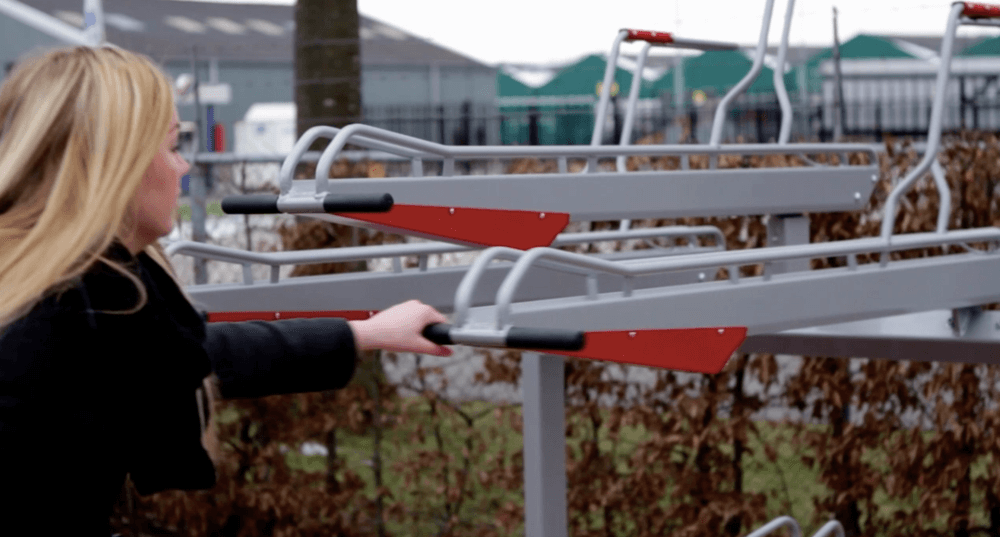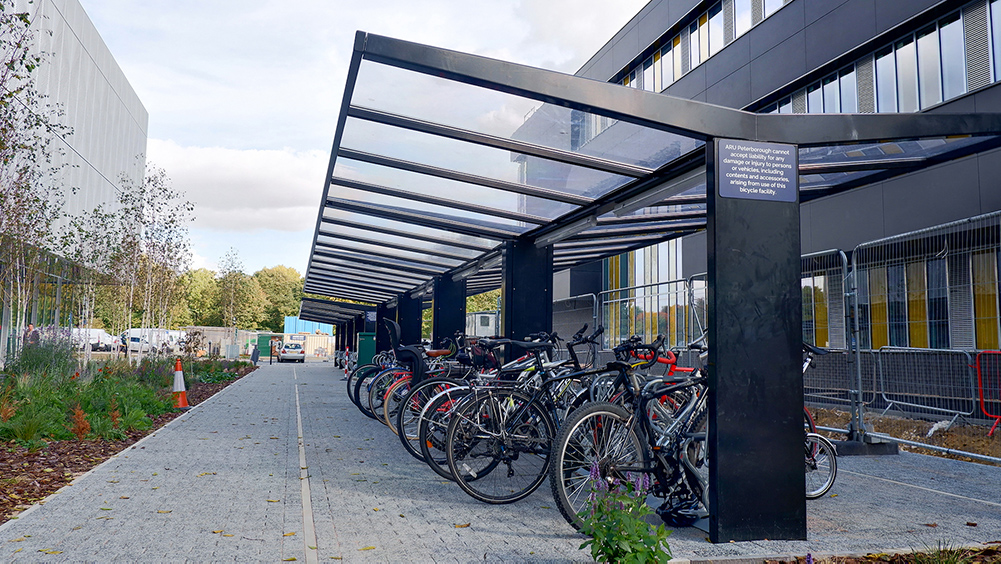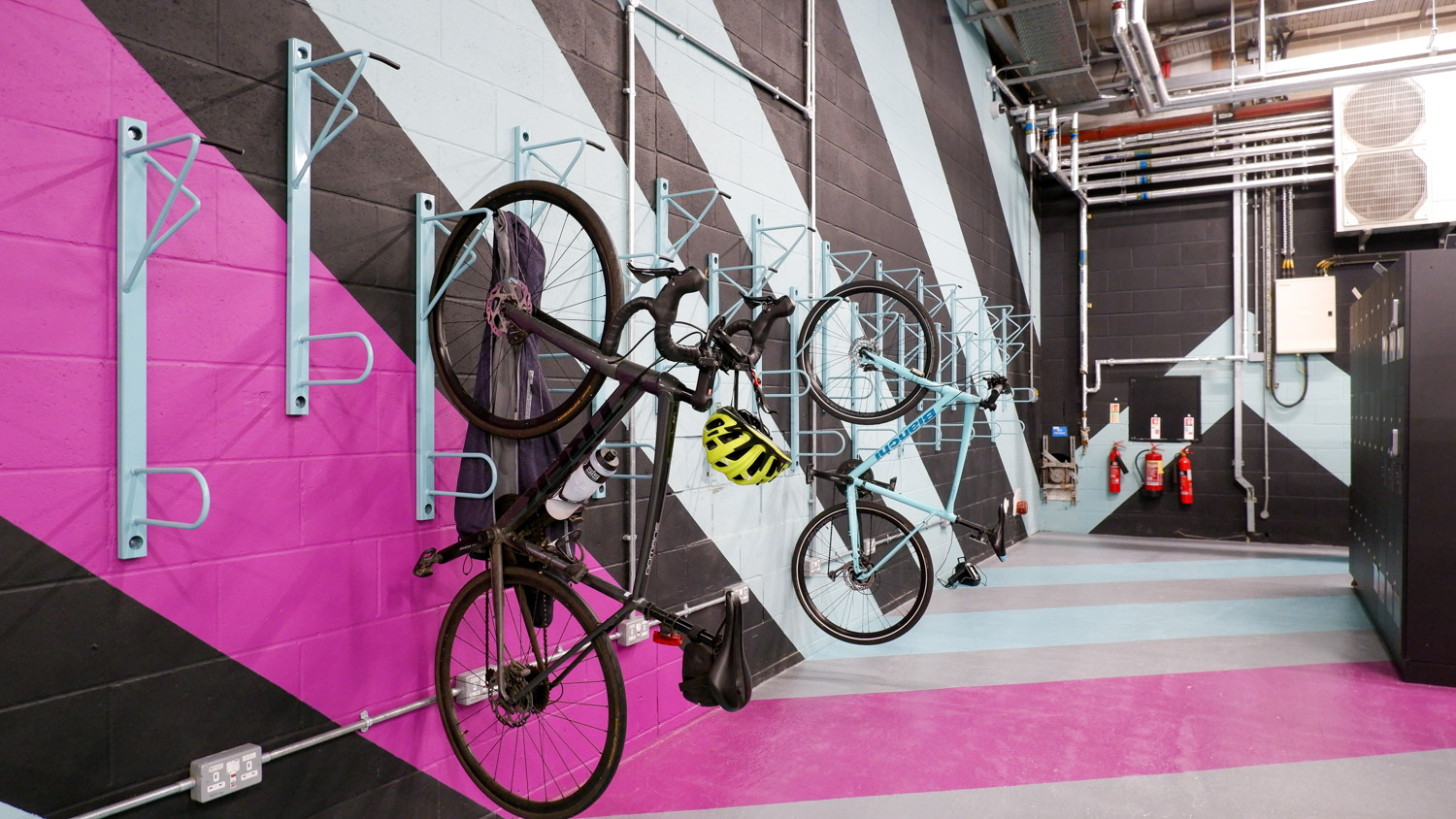When selecting space-saving cycle parking, two-tier racks are becoming increasingly popular as they double parking capacity in comparison to traditional sheffield stands.
A common misconception is that a two-tier is a standardised product across the bicycle parking industry, this is simply not the case, there are a number of double-stacker systems on the market that satisfy the ‘tick box exercise’ of providing space-efficient cycle parking, however problems can arise with the usability and longevity of the system.
Usability and security
- Gas assisted lifting: this is a necessity if the cycle parking is to be used by people of all abilities, as some cyclists may lack the upper body strength to lift their bicycle onto the top level. The gas spring on the top tier removes this issue by taking the majority of the weight when loading and unloading.
- Distance the upper tier lowers: the further it lowers to the ground, the easier it is to simply lift the front wheel and push a bicycle onto the top tray.
- Bicycle security: locking points are essential, a minimum is for both wheels to be locked to the system, but ideally an additional locking point that allows for both the frame and wheel is preferable.
Durability
- FietsParKeur is a recognised accreditation of a product’s quality, certified products should last 15 years+
- A quality gas-spring increases the lifespan of a rack, the 2ParkUp gas spring has been tested to 20,000 movements with and without a bicycle.
Noise Pollution
- Often overlooked, the moving parts of a two-tier rack can create noise during loading and unloading and a gas-spring acts as a noise-reducing feature.






